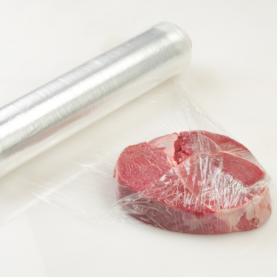Packaging – information
Over the centuries, more and more text appeared on packaging as the products themselves became more complex. The development of commercial society, industrialisation and the arrival of self-service meant that packaging had to be reinvented. Having starting out as a simple ‘skin’ that protected and preserved, it became a medium of expression that today follows a strict codification system governed by laws.
From Antiquity to the 1920s
Apart from its role of containing the product, preserving it and protecting it during transportation, packaging has another function, that of informing the consumer about the contents, the identity of the manufacturer and the origins of the product. In Antiquity, amphora, which can be considered as the tins of food of the time, usually displayed brief information (name, initials and drawings) about the contents and provenance, or even the quality of the product. The Middle Ages saw the rise of the heraldic language adopted by craft guilds. They placed coats of arms on their packaging as seals guaranteeing the quality and origin of the product. The brand, in the modern sense of a symbol of the product, first appeared in the 16th century. Yet it was the Industrial Revolution of the 19th century and the expansion of mass-market retail in the 1850s that led to the rapid development and increase in branding on packaging. In the 1920s, the arrival of self-service and supermarkets in the West changed the attitude of consumers facing an increasing multitude of products and changed the ‘face’ of the products themselves. The latter now had to rely on their packaging to sell and thus informing became just important as preserving. Packaging became a medium of information between the manufacturer and the consumer, designed to ‘speak’ and convince.
Legislation on food product marking
In 2003, the World Health Organization (WHO) recommended labelling including nutritional information to help the consumer make wise food choices. Manufacturers now have to follow strict directives in this area. The addition of other information is allowed, as long as it does not mislead the consumer. In Switzerland, the ordinance on the labelling and advertising of foodstuffs (OEDAl) sets out the legal provisions. Thus, a typical item of food packaging in Switzerland comprises, amongst other things, sixteen pieces of information:
the list of ingredients;
storage advice (keep refrigerated, etc.);
the list of allergens present;
the specific name or precise description of the product with its particularities (‘contains sugar’, ‘diet’, etc.);
the instructions on how to consume the product (cooked, raw, etc.);
the obligatory identification mark for producers of food of animal origin;
the declaration of quantity or total volume of the product contained in the packaging;
the manufacturer’s address and the country of manufacture, indicating the origin;
the expiry date;
the bar code, the product’s electronic identifier;
symbols (gluten-free, etc.) as guarantees of control and approval;
nutrition and health claims;
illustration(s).
Pictures of fruit and claims
In Switzerland, pictures of fruit are only allowed if the product contains fruit. As for health claims, these must be scientifically proven and feature on the legally permitted list, or the beneficial ingredient must be present in a significant quantity. For example, ‘high in calcium’ is allowed if 100 ml of the product covers at least 15% of daily requirements. Claims regarding nutritional quality are also governed by law. A diet product may only be labelled as ‘low calorie’ if its energy content is at least 30% lower than the basic product.
HINE, Thomas, 1995. The Total Package. The Secret History and Hidden Meanings of Boxes, Bottles, Cans, and Other Persuasive Containers. Toronto: Little, Brown and Company.
URVOY, Jean-Jacques, SANCHEZ-POUSSINEAU, Sophie, LE NAN, Erwan, 2012. Packaging. Toutes les étapes du concept au consommateur. Paris : Eyrolles.
Office fédéral de la sécurité alimentaire et des affaires vétérinaires OSAV. Étiquetage alimentaire : Comprendre l’étiquetage des denrées alimentaires en quelques clics. http://www.blv.admin.ch, 08.10.2015







